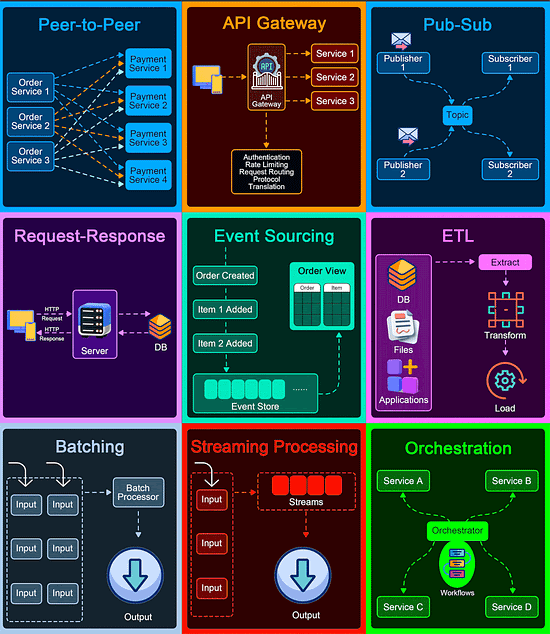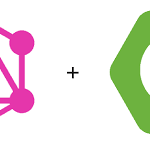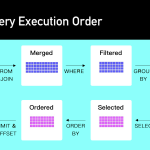Data architecture is the design and organization of data assets and systems to support the goals and needs of an organization. It involves choosing the right data and communication flow to ensure data quality, performance, security, and scalability. This article will explore some of the common architecture patterns that you can use for different scenarios and challenges.
1. Peer-to-Peer
The Peer-to-Peer pattern involves direct communication between two components without the need for a central coordinator.
2. API Gateway
An API Gateway acts as a single entry point for all client requests to the backend services of an application.
3. Pub-Sub
The Pub-Sub pattern decouples the producers of messages (publishers) from the consumers of messages (subscribers) through a message broker.
4. Request-Response
This is one of the most fundamental integration patterns, where a client sends a request to a server and waits for a response.
5. Event Sourcing
Event Sourcing involves storing the state changes of an application as a sequence of events.
6. ETL
ETL is a data integration pattern used to gather data from multiple sources, transform it into a structured format, and load it into a destination database.
7. Batching
Batching involves accumulating data over a period or until a certain threshold is met before processing it as a single group.
8. Streaming Processing
Streaming Processing allows for the continuous ingestion, processing, and analysis of data streams in real-time.
9. Orchestration
Orchestration involves a central coordinator (an orchestrator) managing the interactions between distributed components or services to achieve a workflow or business process.



